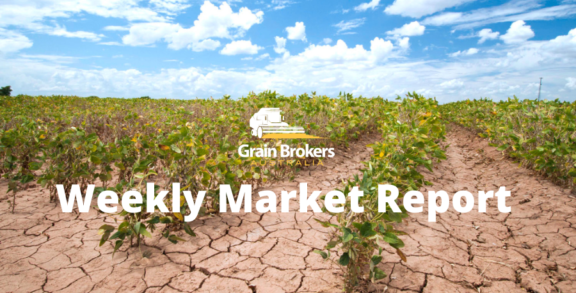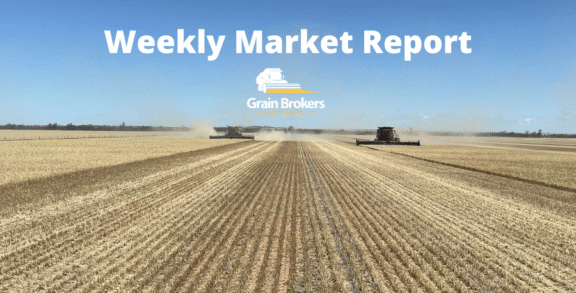
While there were some excellent rainfall events across parts of Argentina’s winter cropping area in late October and the first three weeks of this month, it has not been enough to halt a decline in the production outlook following a season where the rainfall events have largely been hand to mouth in many regions.
While certainly better than last season, the limited soil moisture reserves have kept a lid on winter crop estimates for much of the year. According to last week’s crop update from the Buenos Aires Grain Exchange, soil moisture conditions in 74 per cent of the wheat area fell into the quite broad category of optimal to adequate, compared to 73 per cent a week earlier and 58 per cent at the same time last year. The balance of 26 per cent was rated poor to dry compared to 41 per cent in that category in the same week in 2023.
The BAGE crop report rated the condition of this year’s wheat crop as 34 per cent good-to-excellent, 38 per cent fair, and 28 per cent poor-to-very poor. The proportion of the crop in the good-to-excellent category was down from 38 per cent a week earlier, the area rated fair was down two percentage points, and the poor-to-very poor proportion increased from 22 per cent to 28 per cent. At this time last year, only 20 per cent of the wheat area was rated good-to-excellent, and 37 per cent fell into the poor-to-very poor classification.
With the early harvest in full swing, the Rosario Grains Exchange reduced its 2024/25 wheat production outlook by 700,000 metric tonne last week, citing delayed rainfall in key agricultural regions as the primary cause. This drops the exchange’s estimate from 19.5 million metric tonne, off a planted area of 6.7 million hectares, with the adjustment reflecting the impact on crop yields of the persistently dry weather conditions, particularly in September. The lost production is primarily in the northern regions where 310,000 hectares of wheat have reportedly been abandoned. RGE pegged 2023/24 wheat output at 14.5MMT, off a seeded area of 5.5 million hectares.
According to RGE, the rains arrived too late for the country’s north, where further downward adjustments are possible. However, in the central provinces, the rain in October was the key to halting further crop deterioration, and positive harvest surprises are possible. Further south, across most of Buenos Aires and the northern part of La Pampa provinces, the dreaded late frosts have not occurred despite a very cold spring, and the November rains have continued to consolidate the high-yield outlook.
The downward production revision comes despite some early harvest results being slightly better than expected. As of November 20, around 29 per cent of the wheat area had been harvested compared to 26 per cent at the same time last year. Yields in the northern provinces of Chaco and Santiago del Estero are poor as expected, but in the central province of Santa Fe, some of the early yields are coming in around 50 to 100 kilograms per hectare higher than estimated a month ago. While the yield results have been quite variable, there are no signs of major yield loss in the central areas due to late frosts or crop disease affecting grain fill.
The lower wheat forecast from RGE aligns it with the BAGE, which currently forecasts a crop of 18.6MMT, but off a lower planted area of 6.3 million hectares. Its final 2023/24 production number was 15.1MMT off a planted area of 5.9 million hectares.
Barley output is expected to be slightly higher year-on-year, with the BAGE currently calling 2024/25 output 5.1MMT, compared to 5MMT last season. The planted area is also up fractionally from 1.25 million hectares to 1.3 million hectares. The early season barley planting intentions were even larger, but good rainfall in May, lower urea prices and a spike in wheat prices persuaded some farmers to shift some paddocks from barley to wheat at the last minute.
On the export front, Argentinian wheat is reportedly close to displacing Black Sea and European Union origins into open African demand for December and January delivery and has already been competing very aggressively with Australian and Black Sea exporters into key southeast Asian destinations in recent weeks.
Before last week’s revision to wheat output, RGE was suggesting 2024/25 wheat exports could be as high as 13.3MMT, one of the highest on record. That will no doubt be revised lower with the smaller crop, but the number will still be significant from a historical viewpoint.
The Buenos Aires bureau of the USDA’s Foreign Agricultural Service expects wheat exports of 12MMT in the 2024/25 marketing year, based on its production estimate of 18MMT. This figure includes the wheat equivalent of wheat flour exports, is up from 8.2 MMT in 2023/24, and is 500,000 metric tonne more than the USDA posted in its November global supply and demand update. Local exporters believe farmers will need to sell significant volumes of wheat to finance summer crop inputs and land rentals and will most likely store soybeans once harvested as an inflation hedge as they tend to hold their value better due to consistent demand from the domestic crushers.
In the nine months to the end of September, wheat exports totalled 5.96MMT, with Brazil the primary destination at 51 per cent of volume. However, the second biggest customer was Indonesia, with 22 per cent of the volume, the Asian destination where Australian exporters are feeling the stiffest competition from Argentina in the first quarter of 2025. Other destinations of note were Columbia, Ecuador, Kenya and Peru, each with around 3 per cent.
The FAS is projecting barley exports of 3.3MMT in the new crop marketing year, up from 3.1MMT in 2023/24, but 100,000 metric tonne less that the USDA’s official November estimate. Exports in the first nine months of 2024 were 2.8MMT, with China and Brazil accounting for 83.3 per cent of the total at 1.66MMT and 0.68MMT, respectively.
Last week concluded with some excellent news for Argentina’s grain exporters, with the government finally publishing the terms of a long-awaited proposal for dredging of the Parana River. The international tender for a 30-year licence includes a pivotal provision to deepen the navigation channel in the country’s main trade waterway. This will allow exporters to load bigger cargoes at the Rosario export hub, increasing their competitiveness in global markets.
Call your local Grain Brokers Australia representative on 1300 946 544 to discuss your grain marketing needs.
Written by Peter McMeekin.





